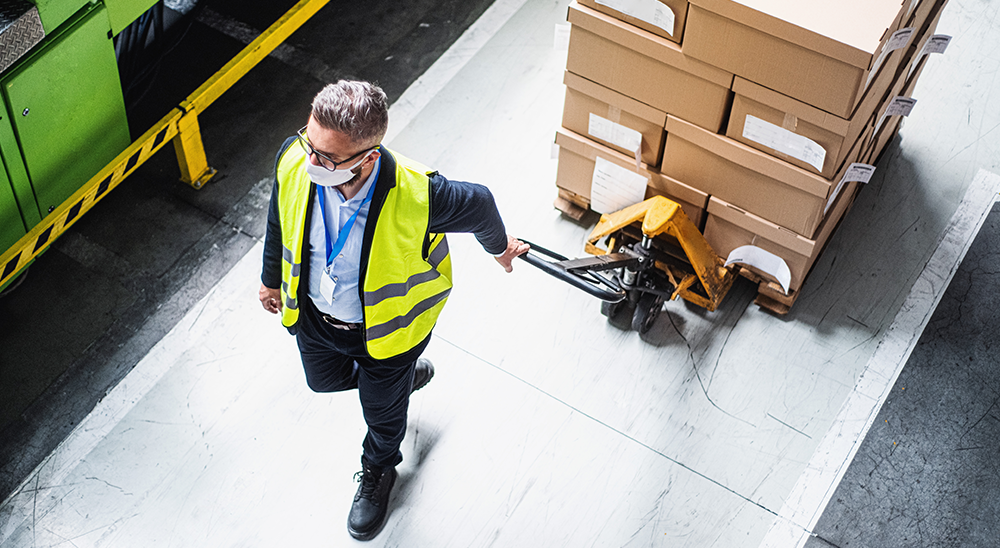
4-minute read
Companies like Apple, Google, and Amazon have been deploying tech solutions for combating COVID-19. All of these systems lack either active social distancing measures or privacy regarding location data. Dedicated systems such as Halo allow employees to keep their privacy while helping prevent the spread of COVID-19.
As many employees return to the workplace, big tech companies in particular see the importance of maintaining social distancing. Amazon, Google, and Apple have all deployed their own systems that they hope will make social distancing and/or contact tracing easy for their staff. But along with the benefits of deploying these systems come some major downsides, not least of which is the absence of either location-data privacy or active social distancing measures.
Amazon
Amazon has deployed a system called Proxemics in over 1,000 locations already. Proxemics analyzes images from security cameras, detects employees who are too close to one another, and sends those images to human reviewers. Amazon has also begun rolling out a secondary system that uses cameras and AI to display an augmented-reality image on large screens with projected rings around employees, which change from green to red when two employees are too close to each other.
Innovative though they are, these systems have come under fire for a number of reasons. With both systems, employees are constantly under surveillance at work, and their individual movement is tracked with AI. For anyone even remotely concerned about privacy, this presents serious concerns.
Along with the privacy concerns, however, is the fact that the systems are simply ineffective. Proxemics, in particular, is useful for identifying choke points in Amazon warehouses, but it isn’t accurate or frequent enough to be used for contact tracing. It also cannot be used for preventing contact between employees, instead merely flagging contacts that have already taken place.
Apple and Google
By contrast, Apple and Google have collaborated on an API (Application Programming Interface) for app-based solutions that assign users anonymous ID numbers and use Bluetooth to track contacts and notify individuals if someone they have recently come into contact with has contracted COVID-19.
This API solution is available to government health services as a way to prevent apps that use location-tracking data to flag contacts. What apps that use the Google/Apple API have in common, however, is that they don’t allow for active social distancing measures such as notifying users when they are too close to each other.
A number of developers are continuing to work on apps that use location-tracking data, despite the challenges and privacy concerns. To ensure that location is consistently tracked throughout the day, these apps need to circumvent system or user interruptions, like an app being pushed to the background by a user listening to music, or a user quitting an app manually. This makes it difficult for users to avoid having their location tracked outside of work and their location data shared with the developers. Many businesses are simply not comfortable with requiring their employees to share location data with tech giants that have ill-defined data-privacy guidelines.
Halo Wearable Technology
The alternative to using location-tracking data for active social distancing is using Bluetooth on purpose-built devices to flag only contacts between users. Wearable devices like the Halo wristband don’t track users’ locations at all. Instead, they send out short-range Bluetooth signals that are picked up only by other Halo wristbands. The devices use those Bluetooth signals to judge the relative distance between two devices and notify users if they are too close.
At the end of each day, employees leave their Halo wristbands at work, where they are recharged and have their data uploaded. If an employee is diagnosed with COVID-19, the system can be used to pinpoint which other users the employee came in contact with, so that appropriate steps, including testing, can be taken. What the system can’t do is determine where those contacts took place, because it only tracks contacts between devices, not the locations of those devices.
Let TPD Help You
If you are interested in learning more about Halo wristbands, or if you would like to purchase this dynamic technology for your business, please contact the qualified experts at TPD here, by email at info@tpd.com, or by phone at 1.888.685.3530. More information regarding this state-of-the-art technology can be found here.
Filed under COVID-19

.png?width=2400&name=HQ%20TPD%20careers%20hero%20(1).png)


